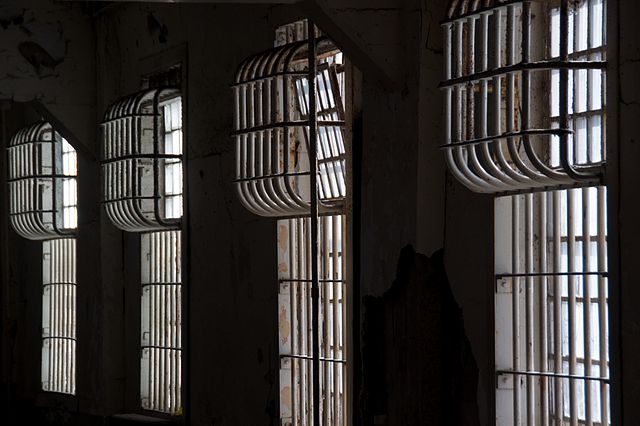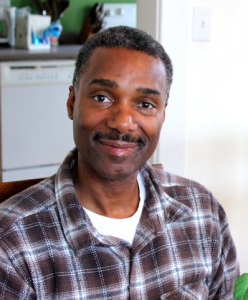
Criminal Injustice: How witnesses, prosecutors, defendants, and even evidence can lie—and land innocent people in jail
A series of recent DNA exonerations has revealed a few cracks in our criminal justice system. In one startling case in North Carolina, two mentally disabled half-brothers were exonerated last month after serving three decades for the rape of a young girl. DNA testing pointed to another culprit, a local man whom police had failed to investigate. The half-brothers’ confessions, it turned out, had most likely been coerced.
It’s often deception of some kind that pries open those fissures in the system…and sometimes, lets innocent people fall through and land behind bars.
That deception takes several forms: On occasion, witnesses lie, and prosecutors conceal important facts. What we once considered to be hard science turns out be be shaky, or dead wrong. And as in the North Carolina case, defendants admit to crimes they didn’t commit.
We’re not as good at spotting deception as we think we are. People do no better than a coin toss when it comes to sussing out whether someone is lying, says former FBI agent and body-language expert Joe Navarro. And that fact holds true for people we assume are pros at lie detection, like police, DEA agents, TSA screeners, and judges.
If the U.S. justice system were really so adept at illuminating untruths, there would be very few innocent people in American prisons. Sadly, there are thousands. Although no one can say precisely how many inmates in the United States are serving time for crimes they did not commit, the Innocence Project cites studies estimating that anywhere from 2.3% to 5% of all prisoners in the U.S. are innocent. Do the math, and we’re talking tens of thousands of people.
Innocent people are convicted of crimes for all sorts of reasons. Our justice system is made out of people, and people make mistakes. Here are four of the most common errors and deceptions that lead to wrongful convictions:
1. False Witness Testimony
Eyewitness accounts are notoriously unreliable. According to the Innocence Project, witness misidentification played a role in 72% of convictions overturned by DNA testing, making it the most common cause of wrongful conviction.
One problem with relying on witness testimony is that the human brain isn’t like a video camera. We make mistakes. We misremember. And our biases affect what we think we see.
Sometimes witnesses lie outright. They may be tempted by a plea deal or under pressure by police. Or they may finger someone else to avoid implicating themselves in a crime. The Innocence Project found that in nearly half of exonerations in Mississippi and Louisiana, defendants were wrongly convicted, in part, “on the testimony of a witness who lied or had an incentive to testify against the defendant“—incentives such as being a paid informant or “jailhouse snitch.”
Even when eyewitnesses claim absolute certainty, says an article in Scientific American, studies cite that “highly confident eyewitnesses are generally only slightly more accurate—and sometimes no more so—than those who are less confident.” Jurors, the article concludes, should be extremely wary about accepting witness testimony at face value.
Earlier this month, the National Academy of Sciences released a report analyzing scientific studies of memory and eyewitness identification and strongly recommending reforms to the justice system that may help prevent false witness IDs and wrongful convictions, including changes in how police lineups are conducted. You can read those recommendations here.
2. False Confessions
False confessions are still considered a prosecution’s holy grail—no matter how the evidence stacks up, juries routinely convict when a suspect confesses. It’s tough for most people to imagine why someone would admit to a crime they didn’t commit. But false confessions happen far more frequently than we believe they do. “It trumps DNA evidence,” says Saul Kassin, an expert on false confessions and psychology professor at the John Jay College of Criminal Justice. “Its effects cannot be reversed.”
Research by University of Virginia School of Law professor Brandon L. Garrett identified more than 40 people since 1976 who falsely confessed and were convicted of crimes, then later exonerated by DNA evidence. His research suggested that certain categories of people are more vulnerable to the kinds of coercion that can produce false confessions—juveniles and people with mental illnesses or intellectual disabilities, for example.
Among the most sensational of these cases is the wrongful conviction in 1989 of five teenagers for raping and beating a jogger in New York’s Central Park. Under pressure by police (and too young to understand their rights and the legal ramifications), several had confessed. They later recanted and were found to be innocent of the crime.
3. Prosecutors Who Withhold Exculpatory Evidence

In a Memphis robbery-murder case that landed Ndume Olatushani on death row, investigators learned—more than two decades later—that police and prosecutors had withheld evidence that pointed to different culprits altogether. He was freed in 2012 after spending almost 27 years behind bars for a crime he did not commit.
In the now-famous case of Michael Morton, a Texas man who was wrongfully convicted of murdering his wife, prosecutors sat on evidence that pointed to an outside assailant—including testimony from neighbors and the victim’s young son, and a bloody bandana found near the crime scene. Morton was exonerated, and a court of inquiry looked into possible wrongdoing by then-DA Ken Anderson.
That court of inquiry is almost without precedent. A ProPublica investigation turned up 30 convictions in New York in recent years that were overturned because of prosecutorial misconduct, but only one prosecutor received punishment “in a meaningful way,” writes Raymond Bonner for ProPublica.
4. When Evidence Lies—Bad Science
Sometimes, even “facts” lie. Physical evidence once considered ironclad, such as blood-typing, fingerprints, hair and bite analysis, and handwriting, has proven less-than-reliable. “Forensic science is not the model of exactitude that popular culture might have us believe,” writes Clyde Haberman in the New York Times. He cites a 2009 National Academy of Sciences report which says that, with the exception of DNA, “no forensic method has been rigorously shown to have the capacity to consistently, and with a high degree of certainty, demonstrate a connection between evidence and a specific individual or source.”
News flash: CSI is not real. Real-world crime labs aren’t always as well-funded and up-to-date as we might hope. And some independent reviews of forensics departments, such as this one of St. Paul’s crime lab, uncovered “major errors in the majority of case files examined…including sloppy documentation, dirty equipment, faulty techniques and ignorance of basic scientific procedures.”
Final Thoughts
Those are high-stakes lies, mistakes, and omissions with dire repercussions for the unjustly punished, and consequently, for our justice system itself. But what’s the remedy?
When it comes to detecting deception, says Joe Navarro, one remedy is a measure of humility and assiduous fact-checking. “The only way to really know the truth is to verify and corroborate every single last detail of what someone says,” he writes in Psychology Today. “And that is the truth about lie detection.”
For private investigators, many of whom are working outside the realm of law enforcement, the stakes might not always be guilt or innocence of a serious crime. But personal or financial stakes can produce similar stress responses, and a private investigator can apply similar techniques in his work questioning people or reviewing evidence in domestic, personal injury, or civil cases.
Ultimately, deception—the act of concealing something or of outright lying—is often a defense mechanism. For many liars (excepting the wholly pathological), the key motivator is usually fear.
Remember: You’re a professional investigator—a skeptic with a curious mind and unbiased heart. If you, as an interviewer, listen with a compassionate and open mind, without judging or taking a subject’s deception personally, there’s every chance you will eventually arrive at the truth you seek.
See also:
Q&A: An Attorney for the Wrongfully Convicted
2013: A Record Year for U.S. Exonerations
Want to learn more about this topic? Check out “Deception Detection 101,” a new CE-approved course for private investigators, by PIeducation.com.
Sources:
Arkowitz, Hal and Lilienfeld, Scott, “Why Science Tells Us Not to Rely on Eyewitness Accounts,” Scientific American, January 8, 2009.
Baran, Madeleine, “Troubled St. Paul crime lab problems even worse than first thought, probe reveals,” Minnesota Public Radio, February 14, 2013.
Bonner, Raymond, “Reversal of Fortune: A Prosecutor on Trial,” ProPublica.org, April 29, 2013.
Cohen, Adam, “Why Innocent Men Make False Confessions,” TIME Magazine, February 11, 2013.
Gibson, Claire, “From Death Row to New Life,” Pursuit Magazine, April 10, 2013.
Haberman, Clyde, “DNA Analysis Exposes Flaws in an Inexact Forensic Science,” New York Times, May 18, 2004.
Innocence Project, “National Academy of Sciences Issues Landmark Report on Memory and Eyewitness Identification”
Innocence Project, “How many innocent people are there in prison?”
Innocence Project, “Lying/Incentivized Witness Testimony”
Innocence Project, “Unreliable or Improper Forensic Science”
Innocence Project, “Witness Misidentification.”
Katz, Jonathan and Eckholm, Erik, “DNA Evidence Clears Two Men in 1983 Murder,” New York Times, September 2, 2104.
Navarro, Joe, “The Truth About Lie Detection,” Psychology Today (March 15, 2012).

